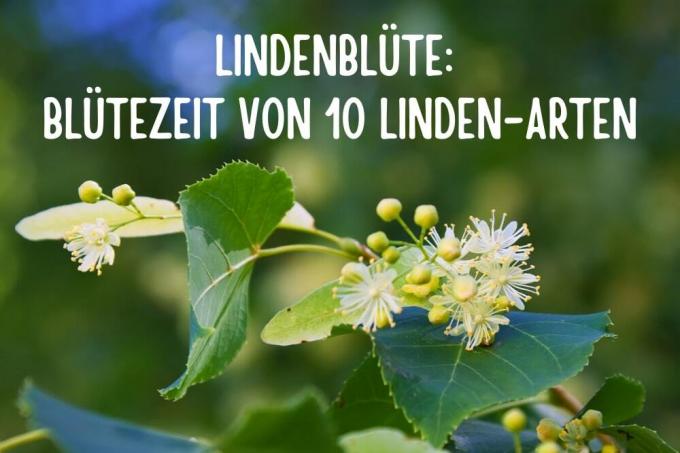
table of contents
- Valuable bee costume
- Bumblebees are dying under linden trees?
- Structure of the linden blossom
- Linden species and their heyday
- A to H
- K to M
- S to W
- frequently asked Questions
Linden trees are important for bees, bumblebees and many other insects. The blossom-rich trees bloom between June and the beginning of August, depending on the species. Its flowers contain a lot of sugar-rich nectar.
In a nutshell
- around 40 different species of linden trees around the world, which are closely related and often interbreed
- only summer linden and winter linden are native to Germany
- due to their better resistance to drought and heat, other species are also planted
- Lime blossom takes place between June and the beginning of September, depending on the species
- all linden species are valuable bees and Insect nutrient trees, no poisonous species
Valuable bee costume
All linden species are a valuable source of food for nectar-collecting insects such as bees and bumblebees - which is especially true for the late-blooming Tilia varieties. In particular, old and large linden trees develop an immense number of flowers, which - depending on the tree's water supply - contain a high-sugar nectar. According to scientific studies, this consists of up to 80 percent sugar. Linden trees are such an important source of food for insects because they only have it during their flowering period few more forage plants exist - bees and bumblebees are on the nectar of the linden blossom to survive reliant.
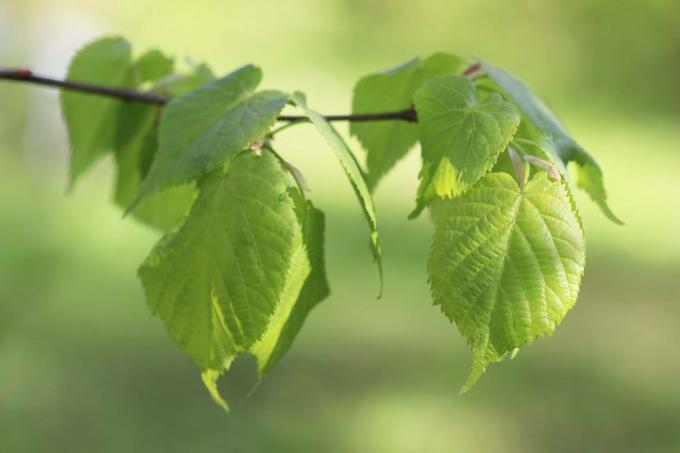
Tip: Linden blossom honey is a popular specialty. It has an aromatic taste and, due to the late blooming time of the linden trees, it is the last type of honey that bees produce each year. Since there are only very few large stands of linden trees in forests in Germany and the trees are instead increasingly and park trees are planted, beekeepers mainly place their beehives in cities to obtain these types of honey on.
Bumblebees are dying under linden trees?
A few years ago the rumor arose that naturalized species of linden such as the silver linden had a flower that was poisonous for bumblebees and bees. The reason for this assumption is the fact that from mid to late July an increasing number of dead bumblebees can be found under late-blooming linden trees. But it is not an allegedly poisonous flower that is to blame for the death of bumblebees, but simply that The fact that the animals can no longer find enough food when the linden tree is in bloom and therefore to starve. If there are no other foraging plants besides linden blossoms, the available food will not be sufficient - which is precisely what bumblebees, which ultimately do not build up supplies, will be doomed.
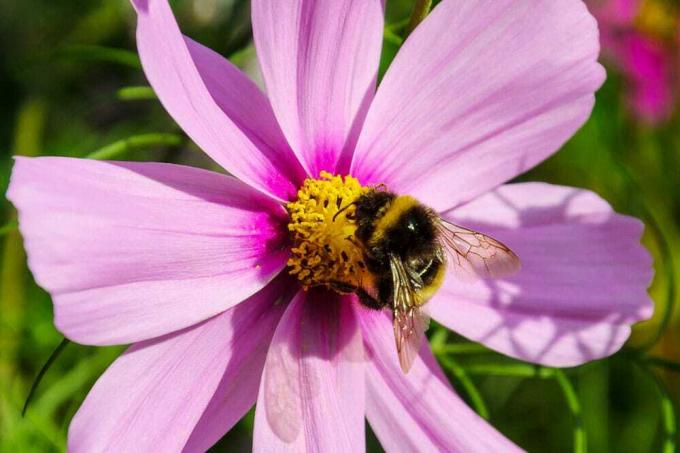
Tip: So that bees, bumblebees and butterflies can still find enough food in late summer, plant or sow late-blooming flowers, shrubs and trees in the garden. Species such as Buddleia (also butterfly lilac, Buddleja), lavender and others are particularly rich in nectar flowering herbs, mallow, different types of coneflower (rudbeckia, echinacea), clover, spherical thistle, phacelia or Ivy. A colorful meadow of flowers instead of a green lawn also helps to curb insect death.
Structure of the linden blossom
Blooming Linden trees give off an intense scent. The greenish-yellow linden blossom is arranged as an umbel, in which the stem grows together with the bract. The bract still fulfills an important function after the flowering period, it serves as a flight organ for the fruit and thus ensures that the linden seeds spread. The linden blossom is hermaphroditic and incompatible with itself, which is why the trees are absolutely dependent on insect pollination. The blossom

- first goes through a male phase
- this is referred to as pre-masculinity
- nectar is already being produced during this
- only then does the female phase take place
- The nectar content of the flowers increases
- the sugar content also rises sharply
The nectar, which is so important for bees and bumblebees, is located at the base of the sepals and contains only a small amount of pollen. After fertilization, nectar production stops.
Linden species and their heyday
Only the summer and winter linden are native to Germany. These two species are also the most common linden trees. In addition, there are numerous hybrids and naturalized varieties that are often planted in parks and avenues due to their resistance to drought and heat. There are around 40 different species of linden, of which only around ten are cultivated in this country. The vast majority of the varieties are at home in Asian regions, especially China and Japan.

The linden species cultivated in Germany all bloom at different times between June and the beginning of August. A species that we have seldom planted until now does not even flower until mid-August and early September. The specific time of flowering depends on the weather situation: Linden trees prefer warm, humid weather and, if the conditions are right, bloom earlier than indicated. Overall, the entire flowering period extends over a period of around six weeks.
Note: The linden tree has always been considered a mythical and meaningful tree. In many places in Germany there is still a mighty village or dance linden tree that often lasts for hundreds of years is old and in earlier times at public rallies, as a meeting place and as a place of justice Etc. played an important role.
A to H
American lime tree (Tilia americana)
The American linden is a very common deciduous tree between Canada and Mexico, but is also used in this country as a park and avenue tree. The species is a valuable tree for bees and blooms in July. Tilia caroliniana is a seldom planted subspecies in Europe (Tilia americana var. caroliniana)

Silver lime (Tilia petiolaris)
The silver lime tree is an attractive subspecies of the silver linden tree, but its heyday is now significantly later: it only begins between - depending on the weather - mid-July and early August Linden blossom. The species is easy to identify by its overhanging branches.
Henry's Linden (Tilia henryana)
A particularly late linden blossom can be admired with this species from China: Tilia henryana only flowers between the beginning of August and mid-September. The species is a potentially valuable tree for bees, but has only rarely been planted so far. It is very suitable for larger gardens as well as for urban areas.

Dutch lime tree (Tilia x europaea resp. vulgaris)
The Dutch linden is a hybrid species from the summer and winter linden. It combines characteristics of both parent species and blooms shortly before the winter linden between June and July. By the way, you can tell the three very similar varieties apart by the color of their leaves:
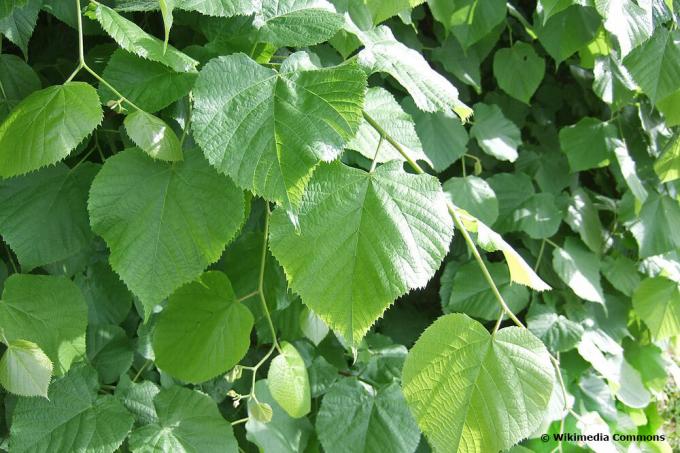
- Summer linden: light green undersides of leaves, comparatively large leaves, yellowish hairy leaf veins
- Winter linden: blue-green leaf undersides, leaves are slightly smaller than those of summer linden
- Dutch linden: pale green leaf undersides
K to M
Crimean linden (Tilia x euchlora)
The Crimean lime tree is a non-native cross between the winter lime tree (Tilia cordata) and the Black Sea lime tree (Tilia dasystyla). At around 18 meters tall, it remains significantly smaller than the winter linden tree and only blooms very late: at the end of July. This makes the Crimean linden an important folk tree for many insects, which at this point in time can only find little food. The hybrid is also a popular tree for urban parks and avenues due to its resistance to drought and heat.

Imperial linden (Tilia × europaea var. pallida)
The Kaiserlinde is also a hybrid and is due to its robustness and the fact that it is well suited as a trellis tree and for paved areas, especially in parks and as an avenue tree planted. It blooms quite early between June and July and, like all linden trees, is an important source of bees and insects.
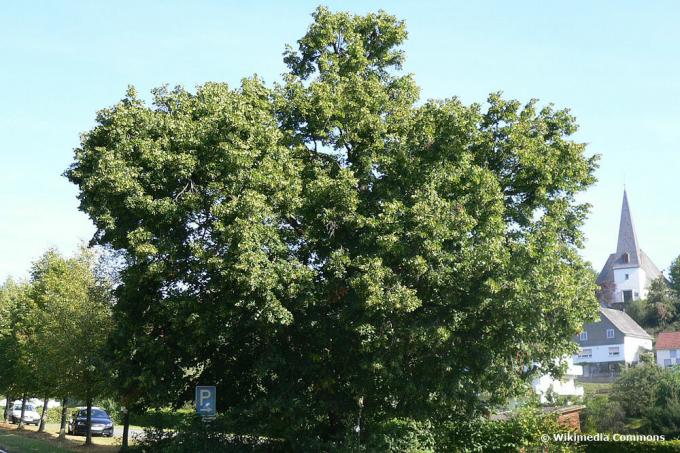
Moltke lime tree (Tilia × moltkei)
The Moltke linden tree, which is seldom planted as an avenue and park tree because of its broad crown, is a variety of the American one Linden, the species is probably a cross between the American and the American tree that was created around 1880 in a Berlin tree nursery Hanging silver linden tree. The Moltke linden also blooms in July and is an extremely valuable nutrient wood for bees, bumblebees and butterflies.

S to W
Silver linden (Tilia tomentosa)
The silver linden, which is very popular as an ornamental tree, has its flowering period before the very late flowering Krimlinde. They bloom in July. The species is native to south-eastern Europe and has been used since the 19th century. Century also increasingly planted in Germany. Silberlinden are considered to be extremely urban climate-proof and resistant to exhaust gases, dust, drought and heat. In addition, these late-flowering trees are valuable for insects.

Summer linden (Tilia platyphyllos)
The earliest flowering linden tree is the summer linden tree. The species, also known as the large-leaved linden (Tilia grandifolia), blooms in June.
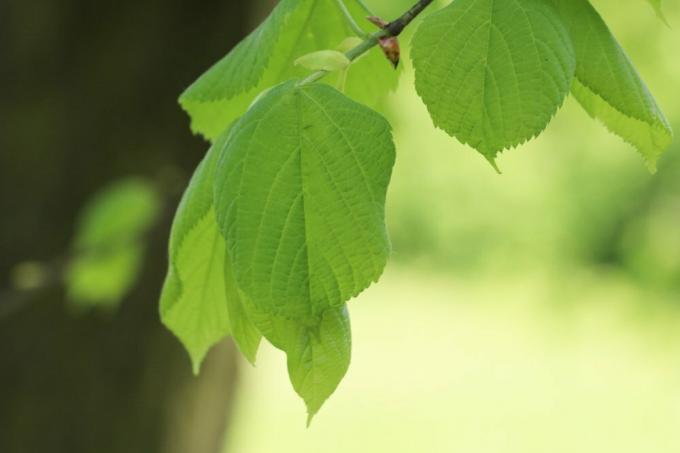
Note: Probably the oldest tree in Germany is a summer linden. This stands as a village linden tree in Schenklengsfeld near Bad Hersfeld. Various experts put their age at over 1000 years. Presumably it was planted as early as 760.
Winter linden / stone linden (Tilia cordata)
The winter linden tree blooms a little later between the end of June and mid-July. Winter linden trees are - like summer linden trees - very blooming. There are up to 60,000 individual flowers on a single tree.
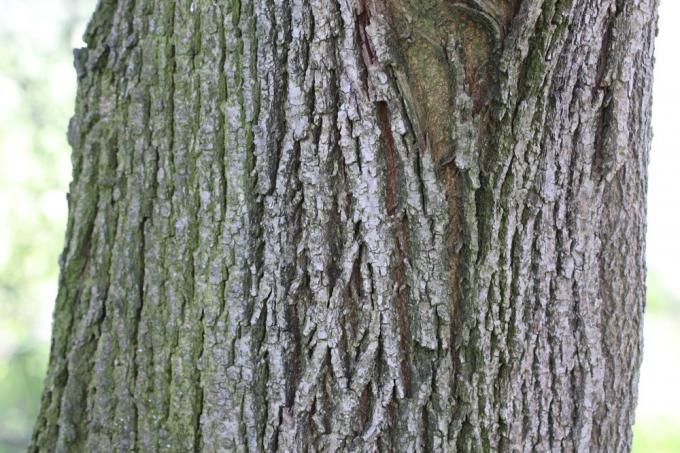
frequently asked Questions
The summer linden tree in particular has been used in folk medicine for centuries. used in naturopathy. Linden blossom tea is said to help with a cold, to support the coughing up of sputum and so relieve the urge to cough. In addition, lime blossom tea is based and thus helps with stress and restlessness. Having a cup before bed will help you fall asleep.
It is best to collect the linden blossom - to make tea out of it, for example - just before it fades. On the one hand, this flower is an important food source for many insects, on the other hand, the content of effective ingredients is particularly high at this time. It is best to collect on a dry day, as early as possible in the morning.
Pick the linden blossom together with the firmly attached bract, if possible on a dry day. You can spread them out and dry them in a warm and dark place, but it is quicker at 50 degrees Celsius in the oven. The flowers can also be dried well in the dehydrator. After drying, put the rustle-dry flowers in a well-sealable container, where they can be kept for several months.
After the flowering period, the fruits of the linden tree are formed. They are small, spherical nut fruits that - depending on the type of linden tree - are usually brownish or greenish in color. They're not poisonous, but they're not really edible either. The spherical fruit is popularly known in some regions as the "nose sweep".
